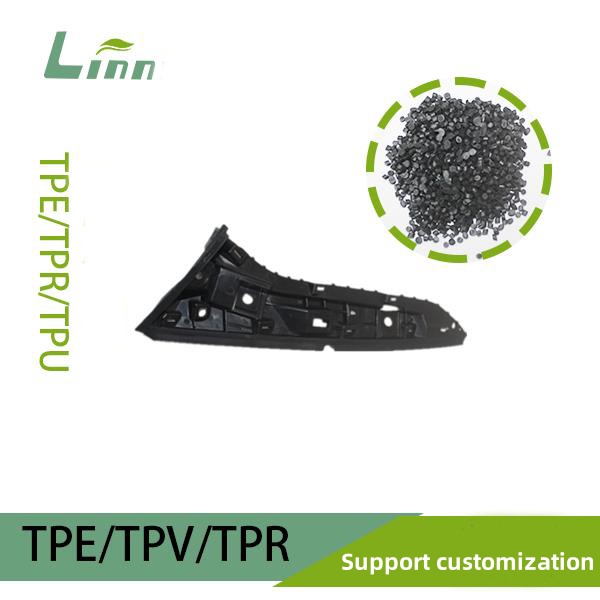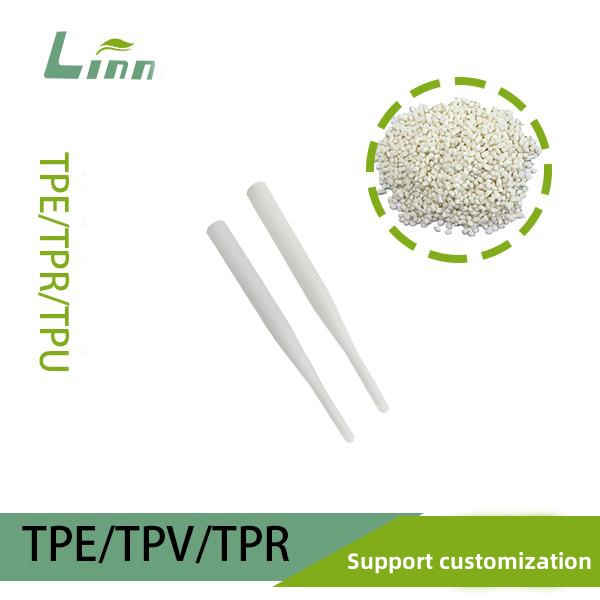Hey everyone, I’m a materials science enthusiast who’s been knee-deep in this industry for years. Today, I want to dive into a question that pops up a lot: What are the main components of TPE material? If you’ve ever held a soft phone case, squeezed a flexible toy, or marveled at a stretchy car part, chances are you’ve encountered TPE—short for Thermoplastic Elastomer. It’s a fascinating material, and its magic lies in what it’s made of. So, grab a coffee, and let’s break it down together—I’ll make it as clear and human as possible, with a sprinkle of my own experiences along the way.

TPE: A Quick Intro Before We Dig In
For those new to the term, TPE is a hybrid material that blends the best of two worlds: the elasticity of rubber and the moldability of plastic. It’s soft yet strong, recyclable, and super versatile, which is why it’s everywhere—from medical devices to kitchen gadgets. But what exactly goes into making this wonder material? That’s what I’m here to unpack.
I still remember my first brush with TPE. It was at a trade show years ago, where a supplier handed me a squishy stress ball and said, “This is TPE.” I was hooked—how could something feel so rubbery yet be processed like plastic? The answer, I learned, starts with its ingredients.
The Core Components of TPE Material
TPE isn’t just one thing—it’s a family of materials, and its composition can vary depending on the type (like SEBS, TPU, or TPO). But at its heart, there are a few key players that show up in most TPE recipes. Let me walk you through them.

1. Base Polymer: The Backbone of TPE
The base polymer is the foundation of TPE, giving it its structure and core properties. Think of it as the skeleton that everything else builds on. The most common ones I’ve worked with include:
SEBS (Styrene-Ethylene-Butylene-Styrene): This is a biggie in the TPE world. It’s a hydrogenated version of SBS (styrene-butadiene-styrene), which makes it more stable and weather-resistant. I’ve used SEBS-based TPEs for outdoor products like garden hoses because it holds up so well.
TPU (Thermoplastic Polyurethane): Known for its toughness and abrasion resistance, TPU is a go-to for things like shoe soles or industrial belts. I once helped a client tweak a TPU formula for a rugged phone case—it was a game-changer.
TPO (Thermoplastic Olefin): A blend of polypropylene and rubber, TPO is lighter and often used in automotive parts. I’ve seen it in car bumpers—it’s durable yet cost-effective.
Each polymer brings its own personality to the table, and choosing the right one depends on what the final product needs to do.

2. Plasticizers: The Softness Secret
Next up are plasticizers, the unsung heroes that make TPE flexible and soft. These are usually oils that get mixed into the polymer to reduce stiffness. In my experience, the most common ones are:
Mineral Oil: This is the classic choice, especially with SEBS-based TPEs. It’s affordable and does a great job softening the material. I’ve spent hours in the lab adjusting oil ratios—too much, and it’s mushy; too little, and it’s like a brick.
Synthetic Oils: These are fancier options, often used when you need better heat resistance or less volatility. I once switched to a synthetic oil for a medical-grade TPE project, and it made all the difference in passing safety tests.
The trick with plasticizers is balance. I’ve seen rookie engineers overdo it, only to end up with a greasy mess that wouldn’t hold shape.
3. Fillers: Strength and Savings
Then we’ve got fillers, which bulk up the material and tweak its properties. They’re not glamorous, but they’re essential. Here’s what I typically see:
Calcium Carbonate: Cheap and effective, it adds weight and stiffness. I’ve used it in TPE for flooring mats to keep costs down without sacrificing quality.
Talc: Smoother and finer than calcium carbonate, talc boosts strength and surface finish. I’ve recommended it for cosmetic packaging where looks matter.
Glass Fibers: For high-performance TPEs, like in automotive or industrial parts, glass fibers add serious toughness. I worked on a project where we reinforced TPU with glass—it was like giving it superpowers.
Fillers are a bit like seasoning—add just enough, and it’s perfect; overdo it, and you ruin the dish.

4. Additives: The Finishing Touches
Finally, there are additives, the little extras that fine-tune TPE for specific jobs. These can include:
Antioxidants: To prevent the material from breaking down over time. I’ve seen TPE yellow and crack without them, especially in outdoor use.
UV Stabilizers: Crucial for anything exposed to sunlight, like patio furniture. I once had a client whose TPE chairs faded fast—adding UV stabilizers fixed it.
Color Masterbatches: These give TPE its hue. I’ve had fun experimenting with vibrant colors for kids’ toys—it’s amazing how a little pigment changes the vibe.
Flame Retardants: For safety-critical applications like electronics. I’ve worked with these in cable insulation projects.
Additives are where you can get creative, tailoring TPE to fit niche needs.

A Handy Table of TPE Components
To make this easier to digest, here’s a table I’ve put together based on my years in the field:
| Component | Examples | Role | Common Applications |
|---|---|---|---|
| Base Polymer | SEBS, TPU, TPO | Provides structure and elasticity | Phone cases, car parts, soles |
| Plasticizers | Mineral oil, Synthetic oil | Enhances softness and flexibility | Toys, grips, medical tubing |
| Fillers | Calcium carbonate, Talc, Glass fibers | Improves strength, reduces cost | Mats, packaging, industrial parts |
| Additives | Antioxidants, UV stabilizers, Colorants | Boosts durability, aesthetics | Outdoor gear, toys, electronics |
This is a snapshot—exact mixes vary by product, but these are the usual suspects.
How These Components Come Together
So, how do these ingredients turn into TPE? Picture this: the base polymer is like the flour in a dough, giving it structure. Plasticizers are the water, making it pliable. Fillers are the salt, adding texture, and additives are the spices, bringing flavor. In the factory, they’re blended in a high-speed mixer, melted in an extruder, and shaped into pellets. I’ve watched this process countless times, and it still feels like magic.
I remember a project where we had to nail a TPE for a yoga mat—soft but grippy, durable but affordable. We tweaked the SEBS, dialed back the oil, and added just a touch of talc. After a few rounds, we hit the sweet spot. That’s the beauty of TPE—it’s all about customization.

Why Composition Matters
The mix of components isn’t just technical trivia—it dictates how TPE behaves. Too much plasticizer, and it’s floppy; too little filler, and it’s pricey. I’ve seen companies skimp on antioxidants, only to have their products degrade in months. Getting it right takes experience, and I’ve had my share of trial and error.
For example, Kraiburg TPE, a big name in the industry, publishes data showing how SEBS-based TPEs with 30-50% oil content excel in softness but need stabilizers for longevity. It’s real-world proof that composition is king.
TPE vs. Other Materials
To put this in perspective, let’s compare TPE to its cousins:
Rubber: Traditional rubber (like vulcanized rubber) lacks plasticizers and relies on cross-linking for elasticity. TPE skips that, making it recyclable.
PVC: PVC uses plasticizers too, but it’s less elastic and often less eco-friendly. I’ve phased out PVC for TPE in projects where green credentials mattered.
TPE’s edge is its flexibility—both in use and formulation.

The Future of TPE Components
Looking ahead, I’m excited about where TPE is going. Bio-based polymers (made from plants) are popping up, reducing reliance on fossil fuels. I’ve read about BASF experimenting with renewable TPEs, and it’s a game-changer. Imagine a world where your phone case is both sustainable and high-performing—I’d say we’re getting close.
Wrapping Up
So, there you have it—the main components of TPE are a base polymer, plasticizers, fillers, and additives, each playing a starring role. It’s a recipe I’ve tinkered with for years, and every tweak teaches me something new. Whether you’re a curious newbie or a fellow materials geek, I hope this sheds light on what makes TPE tick.
Got more questions? Hit me up in the comments—I’d love to keep the conversation going!

FAQs
Q1: Is TPE just plastic with extra steps?
A: Not quite. It’s a blend of plastic and rubber traits, thanks to its unique components. Plastic alone can’t match TPE’s elasticity.
Q2: Can TPE be made without oil?
A: Technically yes, but it’d be stiff and less practical. Plasticizers like oil are what give it that signature softness.
Q3: Are all TPEs the same?
A: Nope! The polymer type and mix-ins vary. An SEBS-based TPE for a toy is worlds apart from a TPU for a tire.
Q4: Is TPE safe to use?
A: Absolutely, if it’s from a reputable source. Food-grade TPEs even meet strict safety standards—just check the specs.


